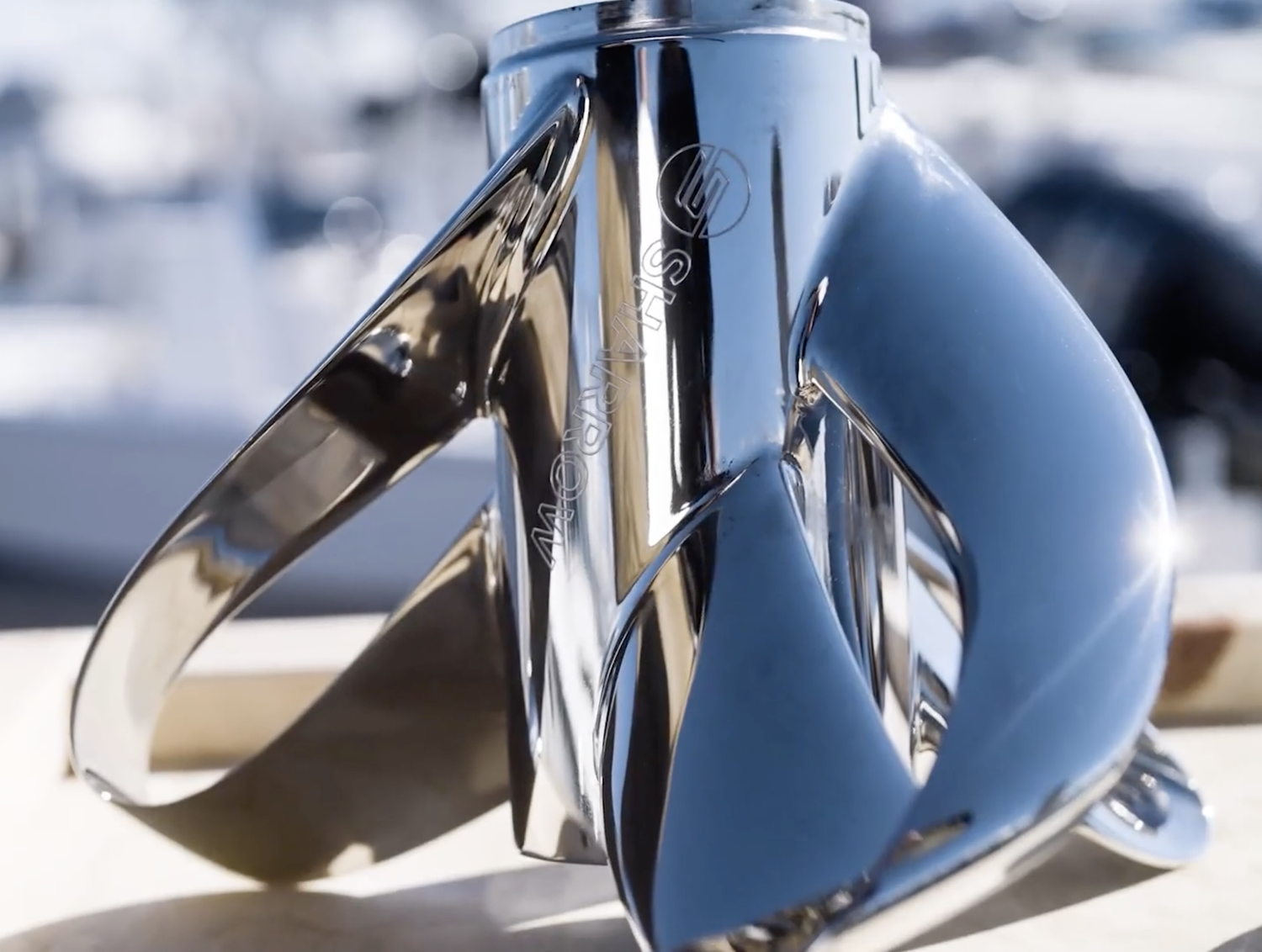You are using an out of date browser. It may not display this or other websites correctly.
You should upgrade or use an alternative browser.
You should upgrade or use an alternative browser.
Toroidal propellers
- Thread starter Thrutch
- Start date
Please register or login
Welcome to ScubaBoard, the world's largest scuba diving community. Registration is not required to read the forums, but we encourage you to join. Joining has its benefits and enables you to participate in the discussions.
Benefits of registering include
- Ability to post and comment on topics and discussions.
- A Free photo gallery to share your dive photos with the world.
- You can make this box go away
MidOH
Banned
Dpvs are a bit noisey.
Boat version will set you back a cool $5000.

 www.sharrowmarine.com
www.sharrowmarine.com

SHARROW MX™ (150HP-450HP) — Sharrow Marine
Total Cost: $4,995 Due Today: $100 Finance options are available through AFFIRM for as low as $136/month . 30-DAY SATISFACTION GUARANTEE ON ALL ORDERS. Free shipping for all orders in the US and Canada. The award-winning Sharrow MX™ is CNC machined in the USA from our premium quality st
The Ruttmeister
Contributor
I'm not a aerodynamics/hydrodynamics engineer... But as I understand it, toroidal propellors improve efficiency because they don't produce tip vortexes. Correctly designed ducted propellers shouldn't produce tip vortexes as the duct stops them from forming.
So while these propellers are significantly better than conventional ones, they shouldn't make a huge difference on a well designed DPV as they all have ducts...
I could be wrong though.
And it shouldn't be terribly difficult to 3D print some prototypes to find out.
Going to need to get a license if you want to sell them though!
So while these propellers are significantly better than conventional ones, they shouldn't make a huge difference on a well designed DPV as they all have ducts...
I could be wrong though.
And it shouldn't be terribly difficult to 3D print some prototypes to find out.
Going to need to get a license if you want to sell them though!
Jon Nellis
Contributor
There are propellers for speed and propellers for thrust. Toroidal props, like most open boat props. are made for speed. Ducted props are used for higher thrust at lower speeds, with the efficiency difference based on how well and for what speed the duct and prop are designed. As speed increases the drag of the duct becomes more detrimental than advantageous and at around 8-10 knots the duct will generally have more drag than the increased thrust it produces, making open props a better choice. Putting a toroidal prop in a duct would be a clear sign the person doing so, has no clue or that they are marketing to fad following people with no clue.
Speaking as someone with no clue, thanks for the info!There are propellers for speed and propellers for thrust. Toroidal props, like most open boat props. are made for speed. Ducted props are used for higher thrust at lower speeds, with the efficiency difference based on how well and for what speed the duct and prop are designed. As speed increases the drag of the duct becomes more detrimental than advantageous and at around 8-10 knots the duct will generally have more drag than the increased thrust it produces, making open props a better choice. Putting a toroidal prop in a duct would be a clear sign the person doing so, has no clue or that they are marketing to fad following people with no clue.
fishy.22
Registered
Thrutch,
That is a great question. As mentioned above, the toroidal props used on outboards are beneficial due to the outboards not having the duct that DPV's have. In short, the toroidal part, is effectively creating a duct for outboards. Again, both of these methods increase effectiveness of the props by eliminating slippage from the under/over sides of the ends of the propellers, termed either slippage or tip vortices depending on the field of use.
The use of these ducts around propellers is most commonly called a Kort Nozzle, commonly used in the marine industry. As John pointed out, best used in low speed, high thrust designs.
Another form of improved thrust efficiency is the use of pre or post swirl recovery devices. Basically vanes that counter the direction of the rotating propellers thereby straightening the waterflow.
That is a great question. As mentioned above, the toroidal props used on outboards are beneficial due to the outboards not having the duct that DPV's have. In short, the toroidal part, is effectively creating a duct for outboards. Again, both of these methods increase effectiveness of the props by eliminating slippage from the under/over sides of the ends of the propellers, termed either slippage or tip vortices depending on the field of use.
The use of these ducts around propellers is most commonly called a Kort Nozzle, commonly used in the marine industry. As John pointed out, best used in low speed, high thrust designs.
Another form of improved thrust efficiency is the use of pre or post swirl recovery devices. Basically vanes that counter the direction of the rotating propellers thereby straightening the waterflow.
Similar threads
- Replies
- 1
- Views
- 544
- Replies
- 18
- Views
- 868
- Replies
- 2
- Views
- 325
- Replies
- 58
- Views
- 4,136



